Learning culture nourishes learning ecosystems
Why learning ecosystems need more time and room
When employees are looking for suitable learning resources, they can often choose from a wide range of contents and formats. This can often make finding learning content that meets the specific requirements time-consuming and inefficient.
Technology can solve this issue. A learning ecosystem links several learning platforms and presents the formats and contents clearly in the learning portal.
Many organisations already utilise learning ecosystems, especially larger companies. A learning management system (LMS) often serves as the foundation. This becomes an ecosystem with the integration of additional platforms and tools, such that both internal and external sources feed into search results.
But what good does a solution based on the most advanced technology do, if it is not well received by the learners? User acceptance relies on a corporate or organisational learning culture that is fit for the future.

“In future, personal and professional development will go hand in hand”
It is not the addition of content that makes a learning ecosystem grow, but its expansion through tools and systems. Fundamentally, that means opening up the LMS and integrating external platforms with external content to create a basis for the development of an ecosystem. Yet, that takes courage!
What happens when companies take the leap and hand over control of their learning system? “Responsibility is transferred to the employees,” says Sven R. Becker, Member of the imc Executive Board. “Thus far, the senior management typically dictates corporate learning, which gives it a regulatory character. Yet, experience shows that the company’s success depends on how much learners are involved. A learning culture transformation has to start with the workforce and grow from there. That requires a mindset shift but should be the clear goal.”
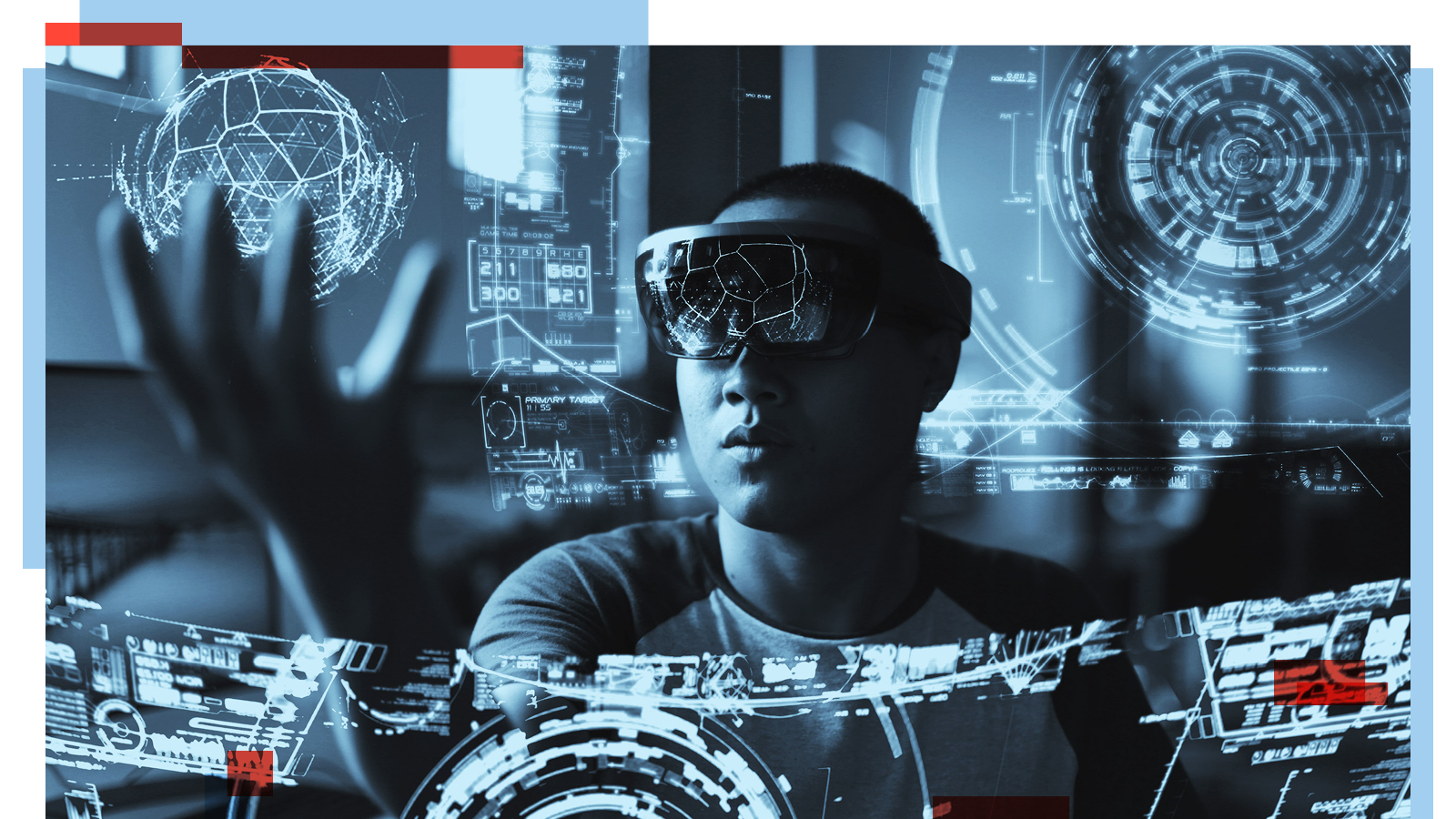
Customised learning paths can be a solution when implementing this, as they help to address personal requirements in a more targeted manner: “In future, personal and professional development will go hand in hand. Different learning systems and achievements must be recorded and stored automatically,” says Andreas Pohl, Director Research and Development at imc. “That facilitates the creation of tailored, custom learner profiles which enable learning across the boundaries of a specific organisation.”
Acceptance and motivation are the first step
“No appointments today – I’m learning.” Is it possible to write that without earning funny looks? Making it possible is a key task for modern companies. Learning and professional development must lose the “necessary evil” or “seminar as a benefit” labels and be anchored as a vital component of corporate culture. One option is to specify professional

Good content can boost the motivation to actually use a learning ecosystem. Sven R. Becker explains: “One trend that is clearly set to stay is gamification. Yet, that alone is no longer enough to win over the new generation of talents. Engaging activities and formats are needed. Getting the mix right is important. A good, blended learning experience is marked by variety – it offers something different. Great stories are remembered and motivate the learner to continue.”
Employees need time and room for creativity to leverage a learning ecosystem
Companies like Microsoft already utilise learning days, learning time, and learning sabbaticals – with great effect. Similarly, the appointment of learning ambassadors has proven successful for several customers of ours. In the automotive sector, some companies have transformation guides who are trusted by their colleagues, putting them in a position to help create awareness for professional development.

Sven R. Becker firmly believes that the strongest ambassador for any measure is the person most critical of it: “If you succeed in changing the view of the strongest opponent, you gain the greatest multiplicator in the company.” Several imc customers have achieved great successes with the learning ambassador model, says Becker.
Learning that is independent of location and time constraints also makes it easier to access the system. That is why it should be equally available from mobile devices and from the workplace.
User generated content – Quick and easy, from creation to publication
An ecosystem keeps growing continuously. Authoring tools are a great option for adding content and knowledge straight from the in-house expertise, as they allow any user to share their know-how.
This turns the learner into a purveyor of knowledge. In that role, they assume responsibility within the system – which will also boost their own motivation.

The technology already provides for this. All that is left to do is to get the learners’ buy in. While that may seem like a monumental task, these initial key steps will get your company on the right track:
- Take the leap and expand your learning ecosystem
- Create acceptance for professional development
- Create a great learning experience with motivating content
- Offer time for learning
- Enable employees to help shape the learning experience
- Not trying is the biggest mistake you can make!

Learning Ecosystems: A Universe of Learning
If you want to use a learning ecosystem successfully in corporate learning, the technical requirements must be right. Time to shed light on what systems have to fulfil in order to be able to meaningfully map a genuine learning ecosystem.

Future of Work: Interview with Çiğdem Uzunoğlu
Competence transfer thanks to digital games? It's possible! In an interview with Çiğdem Uzunoğlu, we explain how computer games and continuing education fit together and how they can be used effectively.

Contact person
I joined the imc newsroom team in 2021. As a journalist my heart beats for content and storytelling.
I’m excited to figure out how e-learing and digitization affect the future of work.
My task is to create content to talk about and I’m always looking for trends.
Privately I love to travel and eat Tapas.
Topics: E-Learning Trends, Corporate Social Responsibility, Press and Influencer Relations, New Work

New work at imc: Shaping the work culture of tomorrow
What the development of a shared working world with the best possible outcomes for employees, customers and the organisation looks like
New work is in. Everyone’s talking about it. There are discussions about flexible working hours, new office concepts or even the 4-day week. All these models focus on one thing: companies want to put employees in the focus and create a working environment in which creativity, self-determination and flexibility are lived.
This change is also actively driven forward at imc. We therefore spoke with a New Work pioneer, who is helping to manage the process. In the move! interview, Kerstin Steffen reveals what is meant by performance culture instead of attendance culture, why imc decided against a total change to home office work and what role managers play in all this.

Kerstin Steffen
Director Brand Strategy and New Work Pioneer

Hello Kerstin! Thank you for making time. imc has recognised that a new work culture is needed and started the New Work Initiative. When did you start the “transformation phase” and why did you take this step?
Kerstin Steffen: We were tied to our home offices for almost two years because of the corona situation. That already gave us many opportunities for development. Before we embarked on the actual transformation, we were facing the question: “Is it actually reasonable to take a step back, or should we continue pressing ahead?” We made the decision to move to a “100% flexible but not 100% remote” model. The transformation phase serves to smooth the transition to the new official, hybrid work model we will adopt in 2022. We want to offer the teams the opportunity to try out and test things, and to incorporate their experiences into the new work culture.

100% flexible but not 100% remote – What exactly does that mean?
Kerstin Steffen: Simply put, it means that our activities are no longer tied to the office as a matter of principle, but the company affords us the flexibility to decide whether we want to work from home or from the office. You could also describe it as performance over attendance culture. We have no fixed attendance quota, but time in the office should be agreed with the team and the manager, and flexibility must not compromise organisational objectives.
While we firmly believe in flexibility, we clearly decided against moving all work to the home office. The relationship and commitment to the company remains very important to us. We want our offices to remain a place of communication and interaction – and that applies to official team meetings as much as personal discussions over a coffee.
You established a New Work Pioneers team. Which departments do the team members come from? How do you collaborate?
Kerstin Steffen: The core team of the New Work Pioneers is based at the headquarters in Saarbrücken where the decision to embark on the New Work Initiative was made. We selected the team based on competences and included members from Internal IT, HR as well as Communications. That allows us to bring together the core competences to support process changes within the pillars of people, technology and spaces. Of course, we can add members that contribute other skills as and when we need them.
We hold regular meetings at least once a week, where we discuss and prioritise all the topics in our target plan, as well as any issues that arise. At times, the core team is split into smaller project teams. For instance, we maintain regular feedback loops with the managers of our different offices to get everyone involved. It also helps us see where improvements are needed and highlight how we might provide support from the headquarters.
Can you summarise the objectives of the imc New Work Initiative in one sentence?
Kerstin Steffen: The overarching goal is to develop a working world together that generates the best possible outcomes for us as employees, our organisation as well as our customers in the given context and situation. In other words: We love being flexible, but this is tied to the condition that the corporate objectives are met and performance is maintained.

Would you say this mindset is what makes new work at imc so special? What is the difference between your approach and the total switch to home office work other companies have realised?
Kerstin Steffen: We are a digital brand and stand for learning. Naturally, we want to understand modern formats and establish ourselves as a pioneer. Yet, compared to the key players in the market, we still have some catching up to do. Nevertheless, I would like to emphasise that this was a fantastic step for imc, and that our colleagues and applicants already consider it an absolute benefit. Working together to drive and shape cultural change is also a huge opportunity – and I invite everyone to seize it. We can be fairly sure that this is not a universal prospect offered by all companies, which makes it a USP for us.
Personally, I really want to see every single person benefitting from it. That means we also need to be open to constructive criticism and listen to concerns, no matter how excited we are about our ideas and progress.
We are all learning together throughout this change process, and our success is dependent on wide-spread acceptance.
What role does remote or virtual (team) leadership play in this transformation?
Kerstin Steffen: It is very much a matter of mindset. We know that team leaders and managers play a key role, because they represent the corporate values and culture to a great extent and infuse the company with these. We adapted the leadership model and developed three new pillars or principles: Lead, Coach and Care. Our managers receive targeted training to develop and enable them to realise these principles and respond to the new circumstances. Based on my experience, I would say traditional management elements should be combined with agile methods. While I’m a huge fan of digitisation, I believe that digital tools are no substitute for personal contact. We consider hybrid formats a great opportunity, but gradual development is key. We are already holding intensive talks and testing various formats.
Managers also need to learn to place more trust in their employees and to be more organised themselves. Flexibility also involves walking away from rigid principles and allowing new things. It is important that managers adjust their mindset to support this.
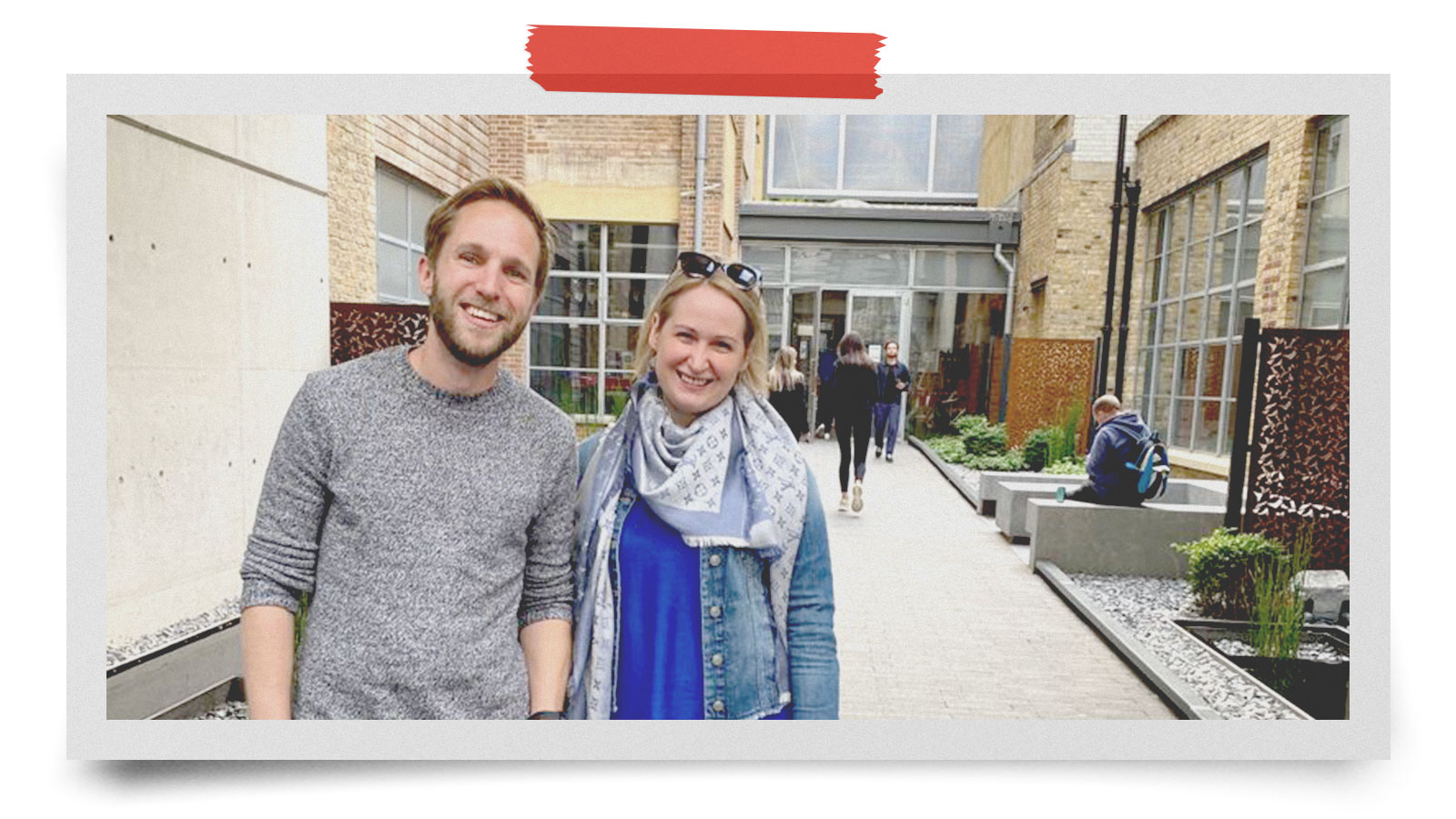
What were the biggest challenges? How did you respond to them?
Kerstin Steffen: We are facing challenges every day, and I’m sure that will still be the case after the transformation. We are really looking at an agile learning process – for our leadership as well as things like our hardware, office equipment or seating arrangements. Being spread out across different locations on different continents doesn’t exactly make it easier, but we are welcoming that challenge. We might not be 100% perfect, but we genuinely try to create a new work culture step by step. We are all highly motivated and rather proud to see our first successes taking shape.
Internal Communications and HR contribute a lot of the support for the measures. It is important to us that the changes are transparent and successes are visible.
How was the transformation phase communicated to the employees? How can you avoid unsettling employees?
Kerstin Steffen: Communication in itself is always important! Once the decision had been made, we first informed the team leaders and asked them to talk to their teams and relay any unanswered questions to us. We then made a global announcement through the official executive channel in the form of a virtual event and sent out an info email with a recording of the official announcement. In addition, we created points of contact in the intranet where information can be obtained, and key questions are answered. New formats were introduced to provide information as well as encourage employees to participate in the dialogue. Of course, the Transformation Team is always available to answer any questions.
Beyond our efforts to inform, each team is invited to help shape the transformation and to identify what is important for the team. We created a global framework. It is now up to each team where they go with that and how they develop it.

What is the employees’ response to the initial changes? Have you received positive or negative feedback yet?
Kerstin Steffen: The feedback we received was mostly positive, which motivates us to drive the transformation. Naturally, concerns and worries were voiced, but that is to be expected in any change process. It is important to take that seriously and actively offer support. It is easy to get carried away, and we must remind ourselves that it is not only a major change in the organisation, but also a cultural shift. That demands sensitive and responsible support.
You still want to trial and test various things. What can we look forward to at imc? What else have you planned?
Kerstin Steffen: First of all, we improved our internal communication channels and created new channels to strengthen team spirit. For instance, we started a newsletter that plays a key role in actively providing information and highlight success stories. We want to make small steps visible, initial successes tangible and let employees share in the experience.
The new formats we created aim to enhance collaboration and communication. The offer will gradually grow: We will create global guidelines, hold workshops and include smaller learning nuggets.
We will also incorporate formats such as social learning, informal learning and user generated content. Our brand ambassadors are also actively helping to shape the transformation. Measures like our BarCamp, Espresso Webinars and Flow & Focus sessions are already well-established and successful. Of course, we will develop these further and make them more professional. As to the strategic aspects, the adaptation of our leadership programme will be crucial, and we are professionalising our operational model.
Thank you for your time, Kerstin! We are excited to see what you have in store for us.

Contact person
I' ve been working as a permanent member of the imc Marketing & Communication Team since 2021. The mix of creative content creation, social media and online marketing activities excites me the most about my job.
My goal is to inspire people with creative and innovative content and to make the imc brand more tangible.
My passion besides my job? Travelling a lot and discovering the world. I am always happy to receive feedback or suggestions at [email protected]!
Shaping New Work together at imc
Take a look behind the scenes with move!
Flexible working models, flat organisational structures and new office concepts - this is already what the new working life looks like in many companies in times of New Work. We at imc have also recognised that it is worth trying out new ways of working. We want to use the opportunities of the modern working world and create something new.
In our background report "move!" we therefore take you exclusively behind the scenes at imc. Our goal is to establish a new working culture that focuses on the self-determination and flexibility of our employees. Join us on our journey towards a new working culture and experience the opportunities, challenges and successes from the classic working world to the "new working" of the future.
In exciting background articles, event reports and photo galleries, we show what modern working at imc means from now on.
What does New Work really mean?
The modern work of tomorrow means first of all initiating and fostering change.
We are in a transformation of the working world in which new professions are emerging, rigid hierarchical management styles are being dissolved and a human-centred way of working is being emphasised.
New Work describes this transformation of the working world, which focuses on self-determination and agility.
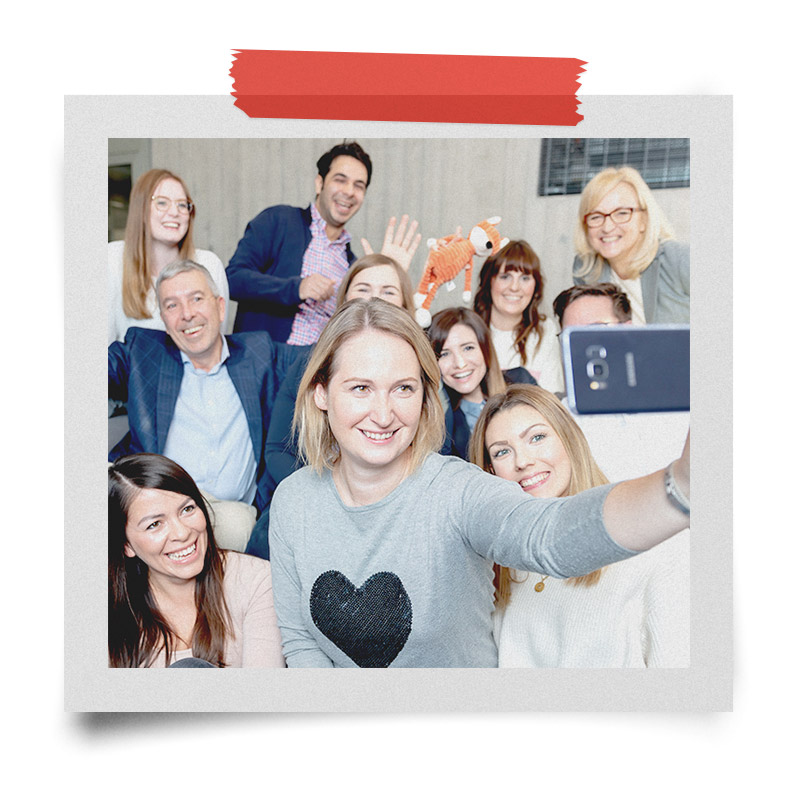

Milestones of the New Work Transformation at imc
One year of New Work is behind us, so it's time to take stock. Together, we look back on the highlights and milestones of the past year.
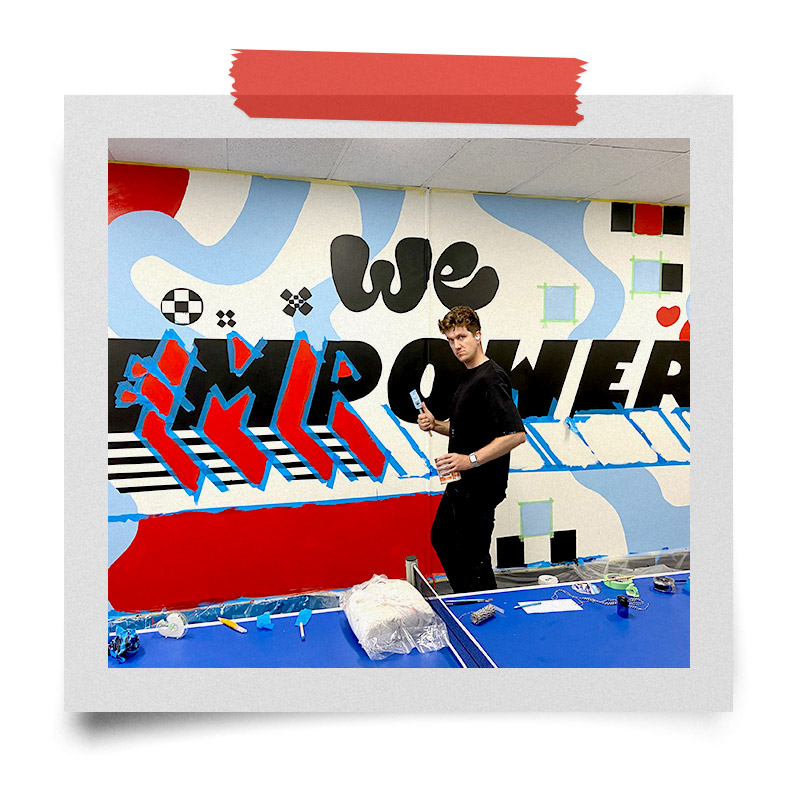
New Work – New Office?
New work needs new offices: That's why we have completely rethought our workspaces and redesigned them in just a few simple steps.

Why personal encounters and intercultural exchange are crucial for new work
We take you on a journey on the occasion of our 25th anniversary and show you why positive emotions, personal encounters and intercultural exchange are crucial for New Work.

Preventive Wellbeing for a Healthy Workplace
Time to talk about health! Here at imc, August was all about preventive wellbeing and mindfulness. We share some highlights with you.

In-House Events and Corporate Learning: A Winning Combination?
Corporate learning and events don’t go together? Wrong! We have summarised the most inspiring formats with added value for the learning culture.

Choosing Where We Work: More Space for Creativity with New Work
We are asking: After eight months of hybrid working, we wanted to know how New Work has changed the everyday working lives of our employees.
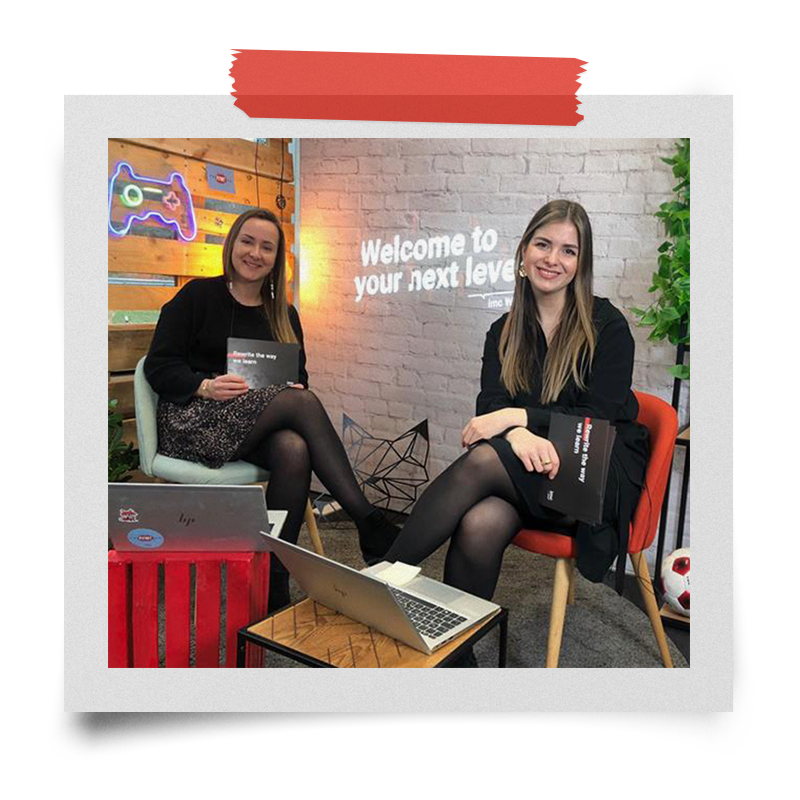
Welcome on board - the new imc onboarding journey
No more boring onboarding processes! In the move! article we show how we at imc will also create a new welcome culture in the future with New Work.

New initiatives for (Mental) Health and Happiness at imc
Mental health is more important than ever: we show what new approaches we are adopting to promote contentment and health at imc.
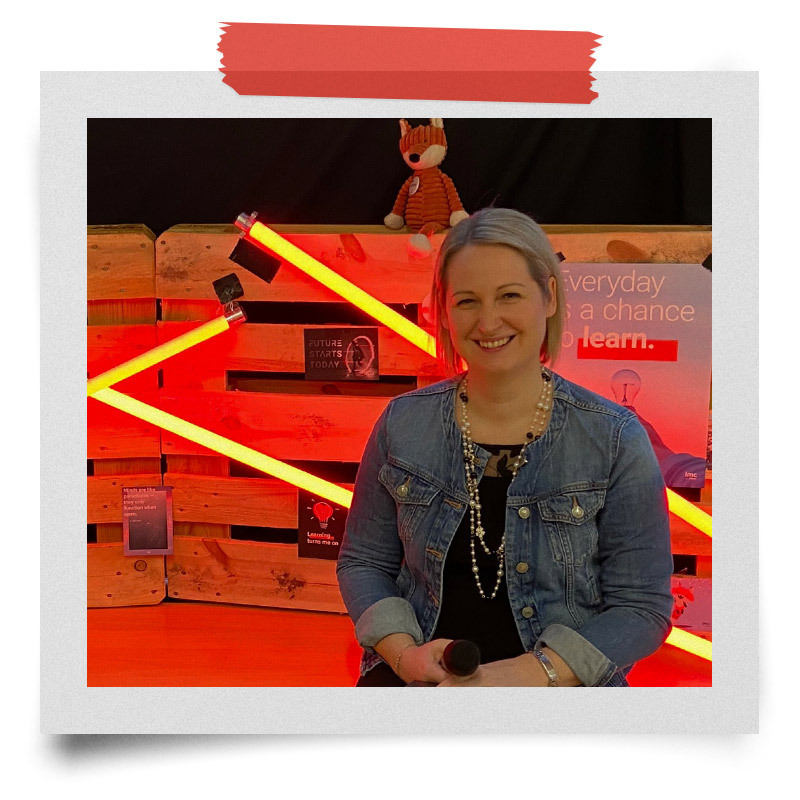
New Work at imc: Shaping tomorrow's working culture together
In the move! interview, Kerstin Steffen reveals what New Work at imc looks like from now on and how a shared working environment is created with the best possible results for everyone.
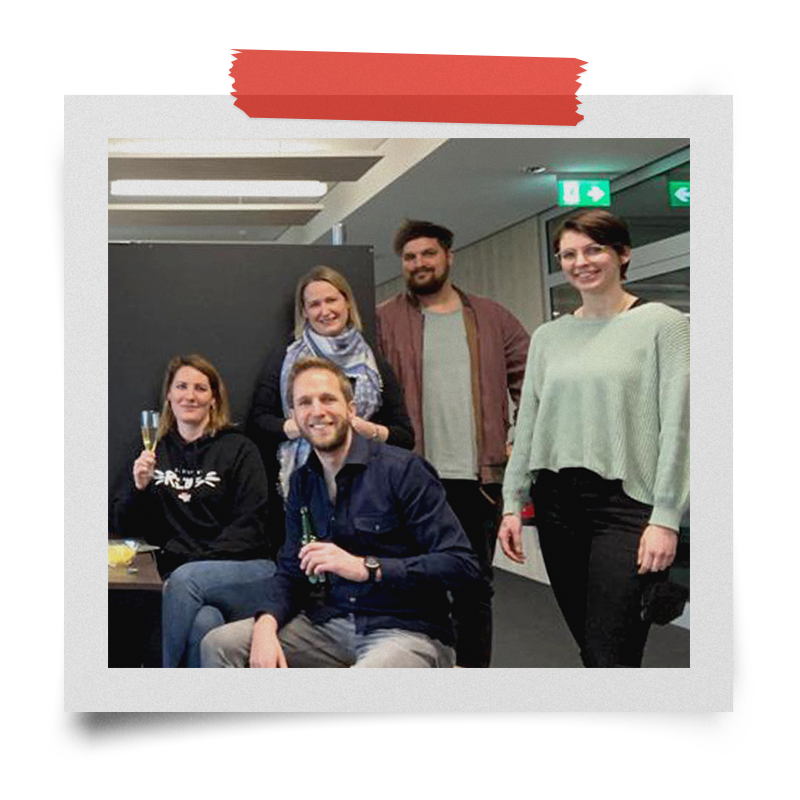
It’s all about Communication & Collaboration
Hybrid working and global teams have fundamentally changed the way we work together at imc. So it's high time for us to ensure global communication and collaboration standards so that collaboration continues to work successfully.


Contact person
I've been working as a permanent member of the imc Marketing & Communication Team since 2021. The mix of creative content creation, social media and online marketing activities is what excites me most about my job.
My goal is to inspire people with creative and innovative content and to make the imc brand more tangible.
My passion besides my job? Travelling a lot and discovering the most beautiful places in the world. I am always happy to receive feedback or suggestions at [email protected]!
Like. Follow. Share.
Discuss the topic of New Work with us and show us how modern working looks like in your company.
Choose your channel and let's go: like, post, discuss, share and recommend.

This year’s e-learning content trends
Interview with Falk Hegewald, Director E-Learning at imc
Out with the old, in with the new. A new year brings new content trends that nobody involved in corporate learning can afford to ignore. Together with Falk Hegewald, Director E-Learning at imc, we are taking a look at the coming year’s crucial topics for companies.

INFO
Falk Hegewald started out in design: He studied graphic design and followed that up with game design. But when imc introduced him to the e-learning sector nine years ago, he decided to stay put. “Back then, I was attracted to the idea of creating something new in this world of e-learning. It was all still very 1990s in those days,” says Hegewald. At imc, he is responsible for custom and off-the-shelf content worldwide.

Now, we’re really getting started: 3D, VR and Metaverse
Falk Hegewald is confident that the upcoming big changes are here to stay – well beyond 2022. Many major corporations are driving the development of virtual reality and metaverse. Nike recently acquired a design studio that “produces” NFTs and virtual running shoes.
“The key driver for metaverse is to create a world where you can play. However, that world will also feature workspaces. We are already entering that world with virtual meeting rooms,” Hegewald explains. “At imc, we are taking that as an incentive to develop the 3D aspects of our content to gain a head start in the creation of such digital worlds and environments.”

INFO
Metaverse:
Metaverse describes an immense collective virtual space formed when real and virtual worlds merge. A metaverse comprises both open and closed platforms. Companies can create their own worlds as well as digital products, and even sell them there – just like in the real world.
Engaging content and adaptive learning
This year will also see a strong focus on more engaging content that both motivates and captivates the learner. Not everything needs to be a game, Falk Hegewald claims: “You can also use novel engaging activities and formats. There is already demand for inspiring training, as companies have realised that they need to get more buy-in from their employees. As a premium content provider, we can deliver that.”
Adaptive learning will also be very relevant for content in the year ahead. In the past, the focus was on learning management systems featuring intelligent interfaces that facilitate appropriate distribution of training courses. Now, we are moving towards skill management through content. Falk Hegewald is confident that adaptive e-learning content will be in demand this year. “You rarely need everyone to learn everything. Employees with different levels of knowledge attend the same training course. Testing prior knowledge and leveraging suitable tools to assign content becomes a whole lot easier if the content is adaptive, too.”
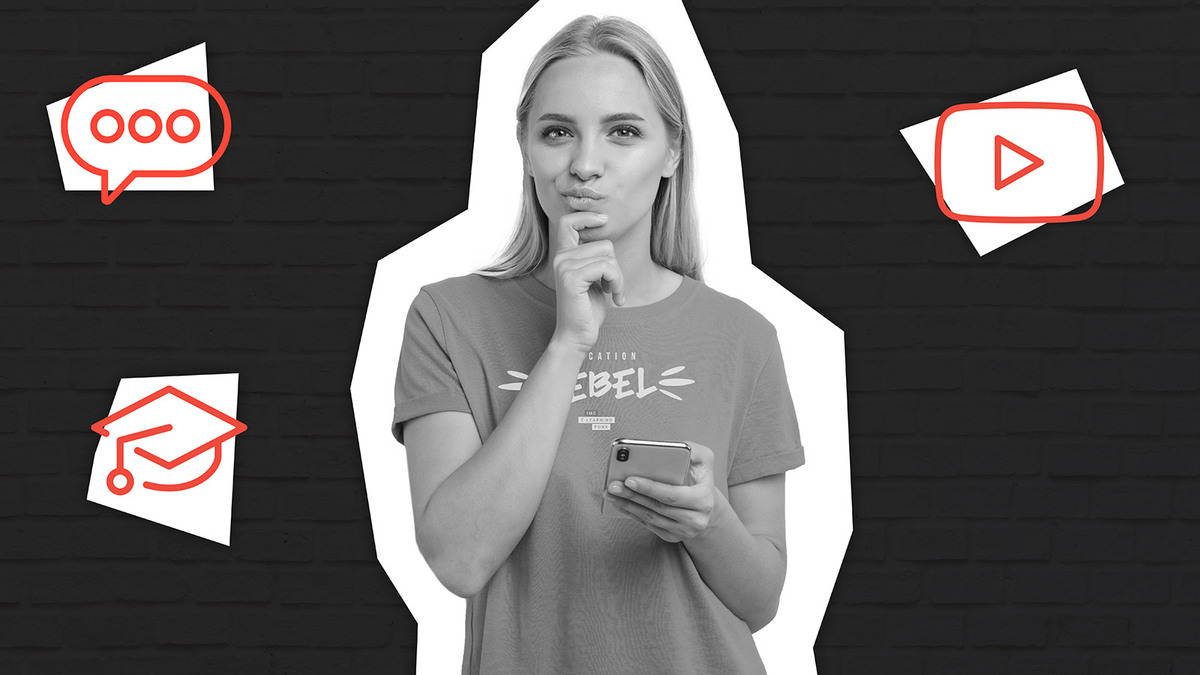
Adaptive learning
Premium off-the-shelf content will be big next year
Last year, Falk Hegewald was particularly excited about the "Cyber Crime Time"awareness game, which deals with IT security issues by letting the learner take on the role of a hacker. Step by step, they learn the most common cyber-attacks first hand. “This goes well beyond your typical off-the-shelf content, be that from us or from our competitors. We wanted to create something that gets the employees’ attention.”
Yet, that was only the first step: This year, Cyber Crime Time will be expanded to include additional training courses and learning nuggets – smaller learning units. “Our aim is to create an entire training world for IT security so Cyber Crime Time remains exciting for our customers,” Hegewald explains.
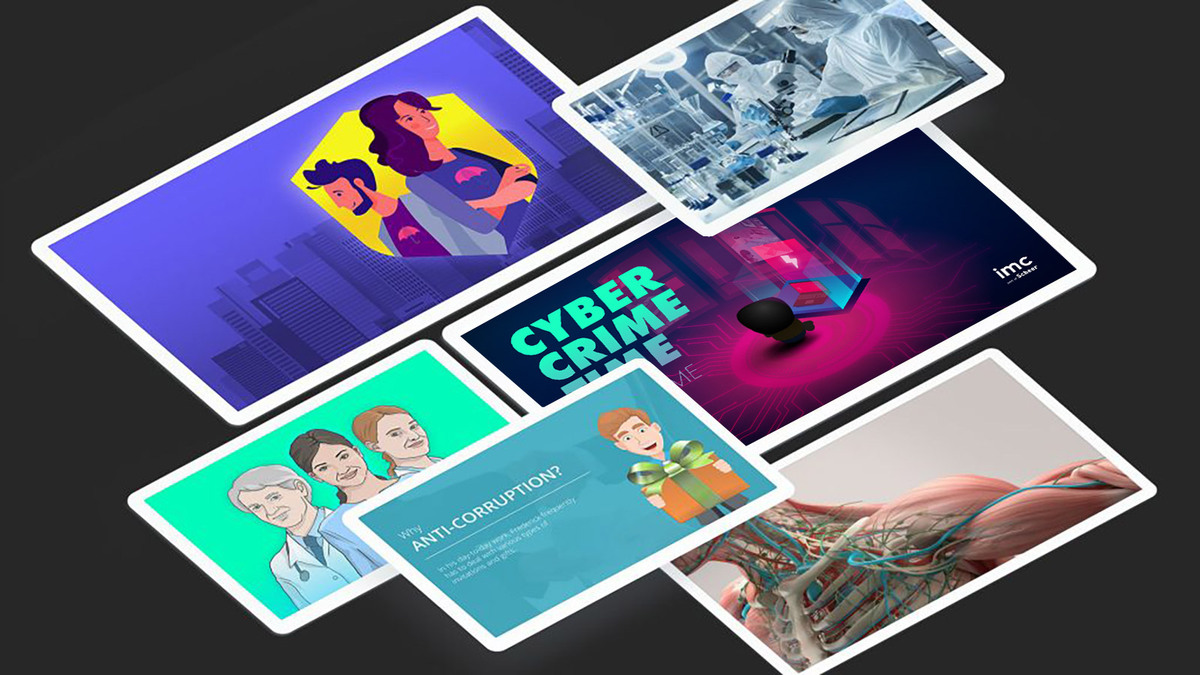
Premium Standard Content of imc
Falk Hegewald’s department also had their hands full designing custom content for corporate clients throughout 2021: They created a wide range of complex learning content, as well as complete digital learning journeys – covering everything from onboarding through corporate strategy to exciting sales training for customers like Jägermeister. “Generally speaking, many of our customers were more daring in their content design and presentation this past year. We love that trend and believe there is room for even bolder creative moves in the stories and the design,” says Hegewald.
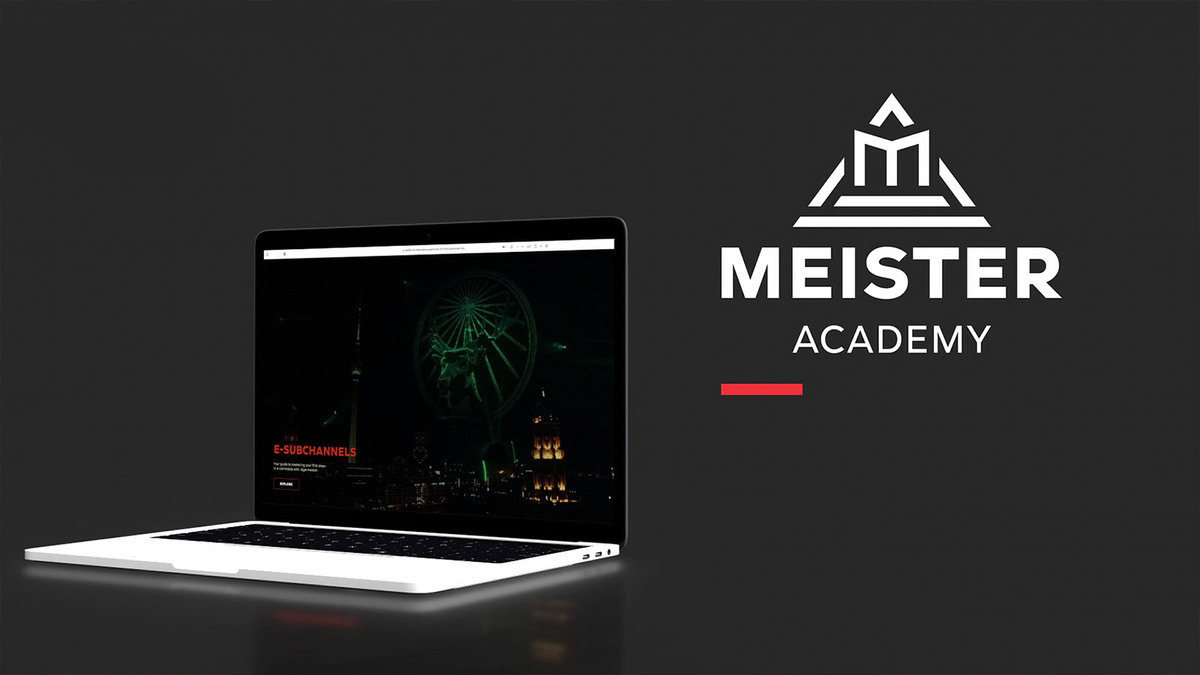
The Jägermeister Master Academy
The war for talents goes into the next round
Companies are forever looking to attract talents and retain them long-term. The right onboarding and employee development are playing an ever-greater role in this quest.
To feed into that ambition, it is important that professional development content is up-to-date and dynamic. Falk Hegewald explains: “Young talents joining the job market are used to a different pace, they use media in a totally different way. It can become very challenging for a company to keep them engaged.”
That is why a key aspect will be to make onboarding and professional development courses accessible on all devices, enabling the latest generation of employees to learn anytime and anywhere.
As Head of the Division, Falk Hegewald always gets excited when new colleagues bring fresh and interesting ideas, as is often the case when they join straight out of university. “This type of inspiration is vital. As a content department, we always need to keep an open mind for new ideas.”

As Content Director, what are you looking forward to this year?
“Exciting new customers and new client projects. Personally, I would really like to visit the other imc locations again and meet the employees I have not yet had any personal contact with.”
Well, here in Saarbrücken, we are looking forward to meeting you, Falk!

Gamification takes corporate learning to a new level
The fact that game-based learning works as a motivational booster for e-learning is already anchored in childhood. We have summarised the most common types of games and practical examples of possible applications for you.
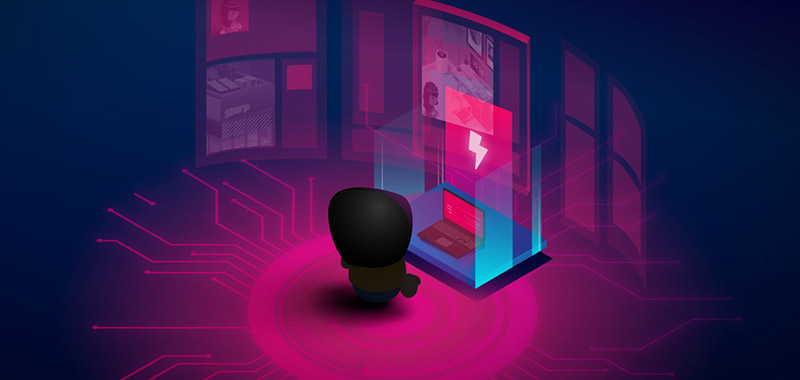
Awareness trainings are the key to success in the prevention of cyber attacks
Cybercrime is on the rise. It is no longer just a handful of criminal hackers who want our data and, unfortunately, our money. Learn in this article how awareness training can improve your IT security.
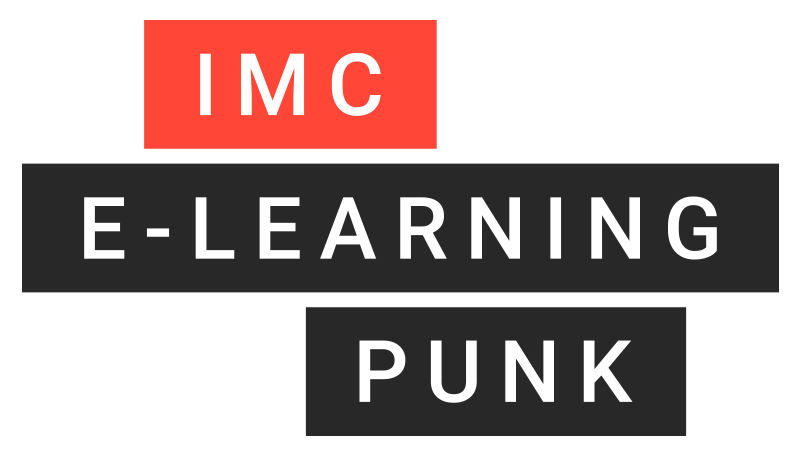
Contact person
I joined the imc newsroom team in 2021. As a journalist my heart beats for content and storytelling.
I’m excited to figure out how e-learing and digitization affect the future of work. My task is to create content to talk about and I’m always looking for trends.
Privately I love to travel and eat Tapas.
Topics: E-Learning Trends, Corporate Social Responsibility, Press and Influencer Relations

The Ultimate eLearning Jargon Glossary 2024
LMS, LXP, SCORM, WBT, EPSS, NGLE, CBT, ITS!? Lost in a world of elearning terms and abbreviations?
Digital learning is teeming with cryptic terms, many of which are not at all self-explanatory and have various, equally-confusing alternatives.
In this A to Z, we shed some light on the subject and have compiled a list of the most important terms and abbreviations in the field of e-learning in 2024.
Jump to a relevant section or scroll on to browse…
Adaptive Learning Systems (aka Intelligent Tutoring Systems / ITS)
Adaptive learning systems gather data on the learner's activities and use this to adapt the learning journey to the individual’s observed needs. Using algorithms, the system will deliver image based content to a visual learner and interactive content to a communicative learner, or advanced content to a learner showing expertise in the subject area.
API
The term API stands for Application Programming Interface. This is a tool that acts as a bridge between two software platforms, allowing them to communicate data with one another.
In the context of e-learning, an API can be hugely valuable by allowing your learning platform to communicate learner data with related business systems, such as your HR software or collaboration tools like Microsoft Teams. This saves time by reducing the need to duplicate the management of employee data across multiple platforms.
Authoring Tool
An authoring tool is software for making it easier to create e-learning content. This could include interactive applications with which text, graphics, sound and interactivity can be combined to form a piece of content. Authoring tools can be used to create simple presentations or WBT (web-based training), or with an advanced tool - a full interactive module. No programming knowledge is required for using an authoring tool.
Learn more about our own authoring tools:
Blended Learning
Blended learning uses a combination of online and in person training to deliver training. The term often also refers to a blend of instructional methods, pedagogical approaches and technologies.
More about blended learning advice on our blog.
Cloud Hosting
Cloud hosting is the housing of digital resources or applications across multiple servers, often across multiple data centres or even countries. This can help to reduce the risk of downtime from a single machine failure.
Also known as cloud-based hosting, this can be a highly effective way for organisations - especially large, multi-site operations - to ensure speed of resource delivery regardless of location, and to scale as needed without the potential limitation of a single machine.
Conversational Learning (aka Conversational Interfaces)
Conversational learning interfaces utilise the basic concepts of social learning to create an interactive learning experience. The chatbot guides the user through the learning material with a question and answer conversation between user and bot.
Emoji's are a key part of conversational learning. Used as a replacement for body language, emoji's provide the learner with the non-verbal cues that are missing from digital training tools.
Custom content (aka bespoke content)
Custom elearning content is developed specifically for the needs of any individual client, in order to best meet their current and future training needs.
The alternative is ‘off the shelf content’, which is typically lower cost and used to deliver quick, compliance-based training. This can be good for ‘tick-box’ kind of training in areas such as basic health and safety awareness.
However, if you’re looking to use e-learning to engage learners and drive performance in the context of your business, then custom content will tend to be much more effective.
Learn about the custom elearning content development services we offer at imc.
Digitisation, Digitalisation and Digital Transformation
Digitisation is simply the transfer of assets from analogue to digital. In the context of learning, this is often taking paper based training materials or face to face classroom delivery, and creating online learning media, which is often housed in an LMS.
Digitalisation is the tactical use of digital tools to improve business processes. For example, this could be analysis of employee or team data within a performance management system (or even just a spreadsheet), in order to identify skills gaps or improvements to training materials. Digitalisation could go as far as changing a business model - for example, a physical goods store moving to ecommerce or a training company switching to selling courses online.
Digital Transformation is the broadest move that happens as a strategic shift orchestrated by the highest level of management. It is a long-term, highly coordinated series of digitalisation projects that may need to overlap and interact with each other.
Digital Transformation can be a powerful modernisation of an organisation that enables it to find new efficiencies, adopt the latest and future technologies, and literally change the organisational culture.
e-Learning
This is what imc Learning is all about - the term e-learning stands for ‘electronic learning’. Also known as elearning without the hyphen and digital learning, the word dates back to the days of installing training software to your desktop computer from a CD-ROM.
Now though, e-learning tends to be seen as synonymous with online learning and mobile learning that’s available anywhere and any time.
Electronic Performance Support System (EPSS)
An EPSS supports just-in-time (JIT) learning. In contrast to formal learning, this takes place at the point of need. EPSS is typically deployed to support a piece of software and can either guide a user through a process or act as a JIT tool, on hand to provide support when needed. The user gains independence and confidence by efficiently learning new systems and processes without the aid of expert trainers.
Extended Enterprise
An extended enterprise means a company that needs to train, for example, franchisees, external service providers, brokers, their supply chain etc. Such training can be tackled strategically and efficiently by creating learning portals, customised for each type of audience, built into your LMS.
Game-Based Learning
The term Game-Based Learning refers to learning experiences that are delivered through the use of a game. A learning environment must be created that is attractive for the user, in which he or she can develop through positive, entertaining learning experiences.
More Game-Based Learning advice on our blog.
Gamification
This term refers to player motivation principles, such as rewards, to drive learner engagement. Gamification elements within training could be scores that are displayed to the learners and allow them to compare themselves with other players. Further gamification elements are badges and badges, which are awarded after completed tasks.
Gamification principles for motivation can be incorporated into training without the learning experience actually involving a game.
Instructional Design
This is a skill and process that combines foundational principles in learning psychology with the latest available technologies to design content for the best possible learning experience. Trends in recent years have moved towards learner engagement, as well as the effectiveness of content, helping people want to follow the training materials.
Multimedia content options, such as video that is now more accessible with ubiquitous, fast internet access, and principles such as gamification and games-based learning, are now key elements of the instructional design toolkit.
Modern e-learning software, such as our own authoring tools, allow L&D professionals and subject matter experts with no formal industrial design training to create effective learning content.
Interactive Learning
Interactive learning requires a greater level of learner involvement than the stereotypical, ‘click next’ e-learning experience. Interactive training content has been shown to bring better learning outcomes than a passive learner experience, as it tends to be more engaging and forces the learner to process information and put their learning into action.
Interactive Video
Interactive videos are films that allow learners to decide for themselves what they want to see next. The learner is thus not only a passive viewer, but actively determines what he or she sees and learns.
Learning Experience Platform (LXP)
The LXP is a relatively new concept that takes e-learning beyond a top-down, employer-led platform into being a more immersive environment where employees can explore what to learn next. This allows them to proactively develop their own knowledge and skills.
Many LXPs take principles of context exploration and recommendation engines from the likes of Netflix. They can be a key tool for large companies to encourage a culture of learning.
Learning Nuggets
A learning nugget is a short learning unit or a building block or a mini module in e-learning that usually lasts no longer than five minutes. The term is often used in connection with Micro-Learning.
Learning Management System (LMS)
A Learning Management System, (LMS for short) is software used to digitally host, manage and track learning content, which is typically assigned by tutors to their learners.
More about Learning Management Systems on our Learning Suite page.
Learning Content Management System (LCMS)
A Learning Content Management System (LCMS) is software that enables the creation, storage and management of reusable learning objects. It also enables web-based learning to be organised and maintained by multiple authors. An LCMS combines the functionality of an LMS and a content management system (CMS).
Learning Record Store (LRS)
A Learning Record Store is connected to an xAPI or Tin Cab and collects, stores and retrieves data and learning activities. An LRS can be integrated into an existing LMS.
Learning System Suite
The concept of the Learning System Suite is a combination of an LMS and LXP, as well as a NGLE.
It provides all the top-down training delivery and assessment capabilities associated with a Learning Management System (LMS) for the essentials of onboarding and compliance, combined with the intuitive and engaging environment of a Learning Experience Platform (LXP) and the broader ongoing training, collaboration and interoperability you might consider to be a Next Generation Digital Learning Environment (NGDLE) (or NGLE).
The imc Learning Suite is built for exactly this purpose - a solution for learning management, experience and performance all in one place, while integrating seamlessly into your existing tech stack.
Micro-Learning
Learning content is divided into small units or building blocks for the user to access as individual elements at any time. This flexible approach is also often termed as 'learning nuggets'.
Mobile Learning (M-Learning)
Mobile Learning refers to training accessed through mobile devices. This makes the learning experience more flexible and more independent of time and location.
Mobile Learning modules are typically designed primarily for a smaller screen size, especially phones, enabling any time, anywhere learning. This requires streamlined content that is less taxing on bandwidth, and a different approach to user navigation.
More about Mobile Learning on our blog.
MOOC
A MOOC (a Massive Open Online Course) is an online course aimed at a large number of participants and is usually free of charge. Pioneers of this format are Stanford University, the Massachusetts Institute of Technology (MIT) and Harvard University.
Multi-tenancy LMS
In the field of software, the term multi-tenancy refers to a single application (so in our context, the LMS) shared by multiple user groups who each experience their own, individualised learning environment. This means that different user groups can have different learning portals (each with its own entry portal, its own features, user rights, content, look & feel, etc.), while the system is centrally managed through a single LMS.
This can greatly reduce the cost and time needed to adapt the training experience for different teams, partner organisations, or even customers.
Read more about multi-tenancy LMS solutions in our in-depth article on the topic.
Next Generation Digital Learning Environment (NGDLE)
L&D professionals and industry commentators have been bemoaning the limitations of learning management systems and predicting their imminent death almost since they were invented. One of the key complaints is their closed nature that requires a great deal of additional administration alongside other business and HR systems.
The idea of the Next Generation Digital Learning Environment or NGDLE is that it opens up a learning and people performance ecosystem of tools with open standards and principles, perhaps with single sign on (SSO), which will greatly reduce the siloing of learning assessment, collaboration, feedback and general communication.
Some people drop the ‘Digital’ as a given, giving us NGLE.
Our own imc Learning Suite is an example of such an integrated solution that plays nicely with other popular business tech solutions.
On-site Hosting (aka on-premise hosting)
In contrast to cloud hosting where data can be stored on multiple servers, and possibly even across multiple territories, on-site hosting will house data at a single client location.
While data security has generally improved over the years and many organisations have moved entirely over to the cloud, on-site hosting can still be appropriate for some organisations where security is of extra concern, and / or to ensure compliance with specific industry or local regulations.
The downside of on-site / on-premise hosting compared to cloud tends to be reduced scalability as resource needs grow or the economies of scale associated with a company maintaining thousands of machines at one or more data centres, rather than a small number on-site. However, this is not a concern for some single-site organisations.
On-the-Job-Training (OJT)
On the Job Training refers to learning that takes place alongside activities at the workplace, and usually under the guidance of a colleague, coach or mentor or also through an EPSS. In colloquial terms, "learning by doing" refers to this type of training.
Performance Management System
A performance management system enables the ongoing, regular monitoring of employees against KPIs and individual targets. These targets and expectations will be set to support collective contribution towards the wider organisational strategy.
A good performance management system will include learning resources to help support individuals and give them data on their own performance, while providing a management dashboard so that L&D and HR teams can identify an issues, in order to offer additional support or intervention where needed.
The imc Learning Suite incorporates the functionalities of a Performance Management System in the LMS. With its extensive Learning Analytics modules, the imc Learning Suite provides both learners and tutors as well as managers with clear dashboards regarding the learner's progress and performance.
Predictive Analytics
The leading modern learning management systems can aid in the use of learner data to identify potential training requirements of individuals or certain groups.
Predictive analytics is a foundation of adaptive learning systems and learning experience platforms.
REST API
API (Application Program Interface) as explained above is a general set of protocols that enables various software to interact and communicate data between each other. REST API or RESTful API (Representational State Transfer) is a subset of this that deals specifically with web applications and is mostly used to handle HTTP requests.
SCIM
The abbreviation SCIM stands for System for Cross-domain Identity Management and is one of the open standards for managing user information across platforms. In the context of L&D and HR, it can greatly streamline IT tasks and reduce admin time when using cloud-based apps and services, as it allows your IT team to automate many repetitive tasks, such as employee details and learning requirements.
SCORM
The abbreviation SCORM stands for "Sharable Content Object Reference Model" which references the digital packaging of e-learning courses. Through this format, SCORM courses can be imported and launched through any SCORM compliant platform. Industry standard LMS all include SCORM players.
Serious Game (related terms: Adventure Game or Learning Game)
Serious games are not exclusively for entertainment purposes, but instead convey knowledge or skills through playful actions. See also: Gamification and Game-based Learning which aim to engage and motivate learners through adventures and competition.
Social Learning
Social Learning promotes an interaction between learners through sharing learning experiences. e-Learning can include social elements through comment functions, social media postings, instant messages, forums, wikis, video chats, etc. which can typically be integrated with modern LMS. In addition, virtual communities can be set up to exchange ideas, knowledge and new contributions.
More about Social Learning on our blog.
Validated Learning Management System (VLMS)
Many companies – for instance, in the food, pharmaceutical or medical sector – need to meet strict regulatory requirements such as FDA Title 21 CFR Part 11. These requirements include that all processes leading up to the production of a product have to be documented and verified at any time. This also applies to employee training, as it is an essential factor in the quality management process.
A Validated Learning Management System (VLMS) - like the imc Learning Suite - enables organisations to make their training processes compliant with these strict requirements. Read more about Validation and Validated Learning Management Systems here.
Video-Based Learning
Learning through videos is popular with both employers and learners as it can convey much more information than static formats in a short space of time, and can appeal to those who prefer visual or auditory content. Videos can be designed and animated in different ways to contextualise learning, or directed by real people - 'characters' - who guide learners through a topic. 'Explainer videos' can be highly effective for onboarding new staff and introducing new concepts.
An advanced use of video-based learning is the interactive video.
More about Video-Based Learning on the blog.
Web-based Training (WBT)
Unlike computer-based training (CBT), no specific software installation is required. Instead, with WBT, the user accesses learning materials via a website or online learning platform.
xAPI (also Experience API or Tin Can)
xAPI is often seen as a further development of SCORM. In principle, learning content and learning management systems (LMS) can exchange information with each other in order to record a wide variety of data and learning activities.
To this end, xAPI has redefined some of the basic practices for tracking learning experiences. The main difference between xAPI and SCORM is the type of learning that each participant can follow.
While SCORM is limited to recording online learning, xAPI can track almost any activity. Here xAPI provides a much more detailed view of learning progress, both online and offline.
Different learning methods that xAPI can track include reading a web page, attending an event, borrowing a library book, playing a game, blended learning, and team-based learning. The xAPI data is stored in a Learning Record Store (LRS).
Do you miss anything?
We hope we’ve shed some light on the most mysterious e-learning terminology.
Do you have any questions, additions or suggestions?
Feel free to contact us!

Convincing stakeholders for an LMS
The success of introducing a learning management system hinges on those responsible for the launch taking due account of their stakeholders - and not underestimating them. We have compiled some expert tips and a checklist to help you in convincing your stakeholders.

Stop boring software trainings!
Stop boring software-trainings! That is the mission of Sarah Hillmann, Trainings Specialist and Business Consultant. She has prepared a new way to train customers for using imc's Learning Management System (LMS).

More information about the LMS
If you would like to find our more about the Learning Management System of imc, please find all information here.
Contact
I have been working in the Marketing & Communication Team at imc since March 2019.
Communication, creative content and social media are my passion. "KISS - Keep it short and simple" is my credo.
To explain complex content in an understandable way and thus make the topic of e-Learning accessible to everyone is an exciting challenge every day.
Privately I love to read, play poker and travel a lot.
I am always happy to receive feedback or suggestions.

Learning ecosystem: A universe of Learning – why you need it, how you build it
Discovering new worlds of corporate learning
The L&D sector has largely reached a consensus: Customisation must play a bigger role in corporate learning. We must strive to democratise knowledge. The panacea needed to achieve these ambitious goals? A learning ecosystem. The focus is almost exclusively on soft factors related to the corporate and learning culture when establishing such a system, neglecting technological aspects.
Yet, suitable software such as a learning management system or learning experience portal is vital. Let’s take a step back to grasp what a system needs to achieve to map a meaningful learning ecosystem.
Inflexible systems and uniform learning paths for all employees are a thing of the past. Nowadays, companies face the challenge of creating a learning ecosystem that promotes self-directed corporate learning in the long term.
Such a system links various platforms and creates a clear structure for the different formats within a learning portal. The search function leverages all integrated systems, taking account of both internal and external sources.

Andreas Pohl, Director Research & Development at imc
So much to the theory. The question now is: What technical structure enables a learning ecosystem to meet all requirements and offer real benefits to the employees?
What role does a learning management system (LMS) or learning experience portal (LXP) play within such learning universe?
imc expert Andreas Pohl, Director Research & Development, leads the development of such systems. Thanks to his many years of experience, he is very aware of the hidden potential learning ecosystems offer.

Hello Andreas! What would a learning ecosystem look like in practice? Can you give us a specific example?
Let’s say we have an industrial client who manufactures special parts for large-scale equipment. All new employees and trainees must know how to use the equipment employed to make these parts.
They train on a training machine to learn the workflow. Now, it is possible to link this training machine to a learning management system (LMS). In that case, a new employee could log into the training machine with their personal identifier. Once they have mastered the workflow, the machine automatically transmits the training success to the LMS where the training is marked as complete.
This is then booked in the employee’s learning path or as learning progress – for instance, as part of their on-the-job training. Thus, the communication between the different systems makes learning easier. This example might be a little staged, but I think it illustrated the practical application of a learning ecosystem very well.
What does a learning ecosystem need to do to make learners use them?
Before you start thinking about a learning ecosystem, a suitable cultural framework must be in place.
As an employer, I need to motivate employees to use a system and allocate time for that purpose. At the same time, the user experience of the learning ecosystem (LE) must be structured in such a way that the employees enjoy using it, and make it easy for them to find relevant content.
A user will be far more likely to use the system when they can see an immediate and direct benefit. If that benefit is not obvious, you have lost.
How do you realise that from a technical perspective?
There are two approaches: First of all, I can make the LMS or LXP the central hub for my learning ecosystem. In this case, the LMS also needs to be able to present contents from external sources.
The learner can find materials from the entirety of the ecosystem through the frontend of the LMS. It makes no difference to them where learning content is stored – in the company LMS or, for instance, an integrated content library. For the learners, it is important that the system is easy to navigate and that they can quickly find relevant contents without jumping through hoops. Whether or not this takes them into a different system is irrelevant.
The second approach is to subordinate the LMS to the overarching portal. Rather than being at the centre itself, it delivers its results to the top level. This is useful when a central portal already exists and the LMS is integrated at a later stage.
How does an LMS become part of a learning ecosystem? What are the prerequisites?
In the second case – when the LMS is a cog in the wheel – the contents must be supplied to the overarching system. Indexing then becomes a major factor. That means that content must be provided in a format that triggers useful search hits presented and shown in a meaningful manner. The same applies to recommendations the system gives the user based on learning habits or interests.
Good APIs (application programming interfaces) are the key success factor for these types of functions. They facilitate the communication between the different applications. Effective and standardised interfaces are always important in IT, but whenever several systems come together, they become absolutely crucial.

How does an increase in content affect the individual interfaces and components?
This is a very interesting question. Let’s break it up into two parts. To illustrate: Your universe might grow because the number of planets is increasing, or because the existing planets are becoming more populated. These are two very different scenarios.
Similarly, you can expand your learning ecosystem by integrating or linking new components, or by adding more content to the existing elements.
After all, the purpose of a learning ecosystem is to continuously and frequently change the volume of the learning content, and the integration of user-generated content (UGC). Going back to our analogy, user-generated content merely increases population density on a given planet. From a technical perspective, this is not a critical process, as the growth takes place within an existing system with no effect on the complexity of that system. It would therefore not qualify as a true expansion.
So, what is “true” expansion? What do we have to watch out for?
I would say a true expansion of the ecosystem involves the integration of additional systems or a new interface. This expansion process is somewhat slower, as each new system needs new interfaces or gateways.
Each “planet” needs to provide the information within the LMS to the other “planets” – and ultimately the user – through standardised interfaces, and various APIs as well as an event bus are utilised for this purpose. Meanwhile, the central system must be able to absorb content and integrate it in its search function to make it accessible to its users.

How does the system know which content should be shown?
The system can only show content it knows. That means either the index content must be transmitted to the system – for example, via a data or event bus – or the system must have direct access to the index. Naturally, this can only work if indices are properly maintained and clearly structured.
What role does the data or event bus play?
An event bus is basically a messaging system. One system throws a message onto the bus, the bus takes off, and the next system can retrieve the message.
The message does not disappear after it is retrieved by one system – it remains available for the other systems. For example, systems A, B and C “take” the message, but system D ignores it, because it’s not relevant to it. Meanwhile, system D might “take” a different message that A, B and C are not interested in. Messages are thus distributed in real time, making manual message transfer to each system redundant (publisher-subscriber approach).
The challenge with this approach is that each system involved must be able to understand the message contents. This often requires some adjustments, as some systems might not be able to translate it directly. This is a major current topic for our development team.
What trends would you say can make learning ecosystems even better?
There is certainly room for improvement in system alignment, which also encompasses IoT (internet of things) and ESB (enterprise service buses). In other words, systems need to know both, which message they need to retrieve from the bus and which immediate adjustments they need to make.
This reduces the need for system adjustment. Now, an ESB is not a trivial thing, and might be overkill for a straightforward set-up with a small number of systems. However, my learning ecosystem is fairly complex and serves more than 10,000 employees, it makes an enormous difference.
Another thing we are working on at the moment is switching over to external contents. Right now, we can integrate external content in the search through our LMS, for example, through the LinkedIn Learning Content Importer. We want to expand that capability to enable the user to switch directly into the external system. We are currently collaborating with a major client to achieve that.
Finally, what should we pay particular attention to? Where do you see the most potential? Are there also disadvantages?
It comes at a cost. None of this is free. Everything we talked about needs investment. The systems need to be maintained continuously, as do the connections to the interfaces, and some of these systems might be proprietary. It’s not an automated process.
Ideally, that will enable me to create a learning ecosystem which optimises how the different needs of all my learners are met. Everything then comes from a single source, which is a whole lot more user friendly and actually feels like one system. A good learning ecosystem goes a long way towards improving the learner experience and providing real support to employees in their daily work.
My advice: Good planning is half the battle! It is important to clarify from the outset what you want to achieve, how many systems should be maintained and how much maintenance can be provided.

How not to break bad with validated processes in an LMS
What requirements must an LMS map for validated processes? And how does Breaking Bad fit here? Questions about questions not only the Pharmaceutical industry should think about.

Learning Analytics: It comes down to the right questions
Learning must not be an end in itself, but fit in the company’s business outcome: More and more managers are demanding this. We therefore looked at how L&D managers can meet this requirement with the help of Learning Analytics.

More about our LMS
If you would like to learn more about imc's Learning Management System, check here for more information.
Contact person
I have been working in the Marketing & Communication Team at imc since March 2019.
Communication, creative content and social media are my passion. "KISS - Keep it short and simple" is my credo.
To explain complex content in an understandable way and thus make the topic of e-Learning accessible to everyone is an exciting challenge every day.
Privately I love to read, play poker and travel a lot.
I am always happy to receive feedback or suggestions.

Six vital modules for every digital onboarding concept
A blueprint for efficient onboarding with lasting impact
Different companies have different requirements for their onboarding process. They might want to use modular and future-proof concepts, achieve cost and time savings compared to current approaches, or enable employees to start working sooner. Moreover, the pandemic has accelerated the need for digital onboarding as face-to-face training has not been possible. Despite the pandemic introducing more relaxed, remote working arrangements, hybrid work arrangements will become the norm; hence digital onboarding will become the tool to deliver a great first experience to new employees.
Yet, companies are not the only stakeholders – Employees have their own expectations of the onboarding process. This is why many HR managers are deciding on learner-centric onboarding that revolves around the needs of new employees:
“I want to know what makes my company tick,” – “I want to feel like I’m becoming part of the community,” – “I want to improve my skills.”
To achieve that, your onboarding needs a framework that provides guidance and an emotional connection while assessing the current state of knowledge and developing expertise.
This article explains how to design an exciting and creative digital onboarding process with new and existing e-learning content, even without a learning management system (LMS).

An illustration of the key building blocks
Our experts are always developing concepts suitable for a wide range of requirements. Get a head start with our “best of” compilation. Let’s imagine this situation: You want to digitise five days of basic training that has always been conducted on site. You are looking at a very diverse group of participants. The target group for this training extends beyond new colleagues, and also includes “old hands,” as well as some external service providers. They each have a different level of prior knowledge, different hardware, and different levels of access to a learning management system (LMS). Some might not have any access at all.
How do you satisfy them all? The solution is to design a structured framework for digital onboarding. Our experts recommend getting a head start with these 6 modules:
- A central (digital) starting point
- A daily virtual kick-off
- The self-learning phase
- A virtual hands-on workshop
- The online quiz
- A learning diary
Together, these six modules form a foundation. Let’s look at each element separately.
My Digital Onboarding Kit – The modules in detail
The central starting point could, for example, be a browser-based landing page created especially for onboarding, a homepage in the company intranet, a portal page (in the LMS) or an interactive PDF. It is important that the employees can see at a glance what is on the agenda for the day when they arrive for their onboarding. Think of it as a modern timetable. Every new employee needs structure, and an overview page is an easy way to provide that.
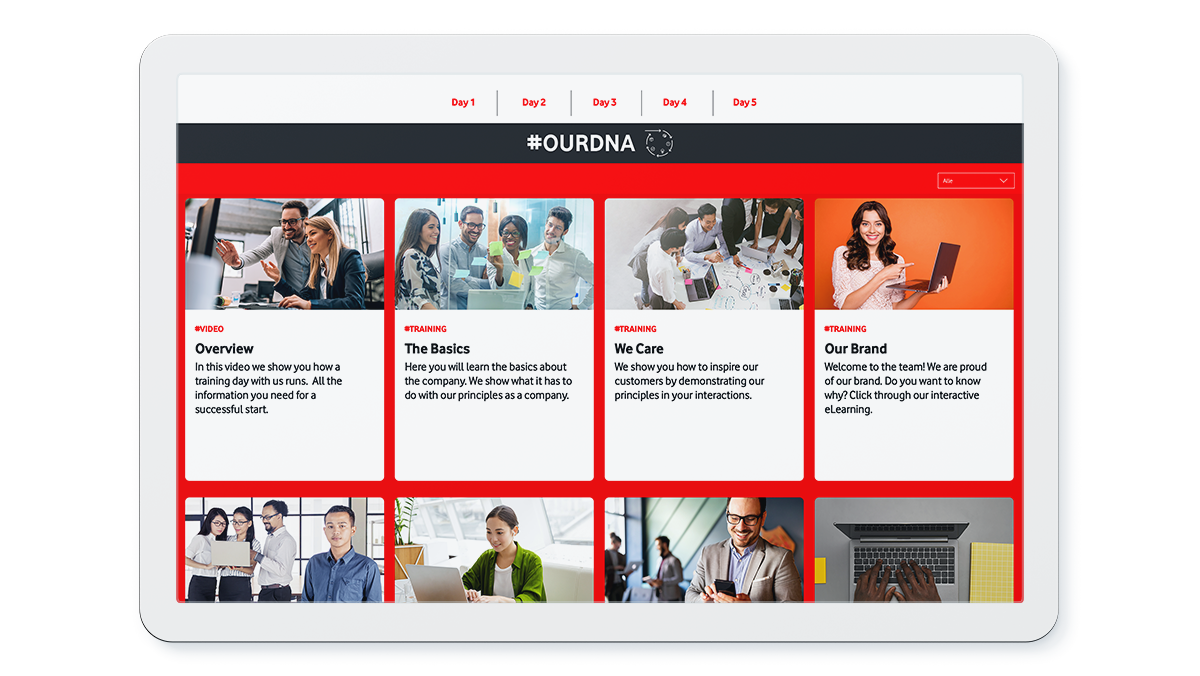
Portal page as central starting point
The virtual kick-off at the beginning of each training day serves to agree and discuss the agenda and objectives for the day together with the trainers. The focus should be on social onboarding, on promoting interaction between the participants. Our experts recommend a playful warm-up with surveys, icebreakers, or activation games aka energisers. Why not play a round of “I packed my bag” to get started? It is helpful to establish a meeting netiquette, specifying that cameras and microphones must be switched on.

virtual kick-off
In the self-learning phase, each learning format achieves a specific objective. For example, digital performance cards help employees gain knowledge with a certain focus, and then apply it in simulations as part of web-based training. Virtual scavenger hunts help them familiarise themselves with the company or the intranet. Companies can also integrate existing training courses or offer individually tailored or branded content. Variation between different e-learning formats has proven particularly effective.
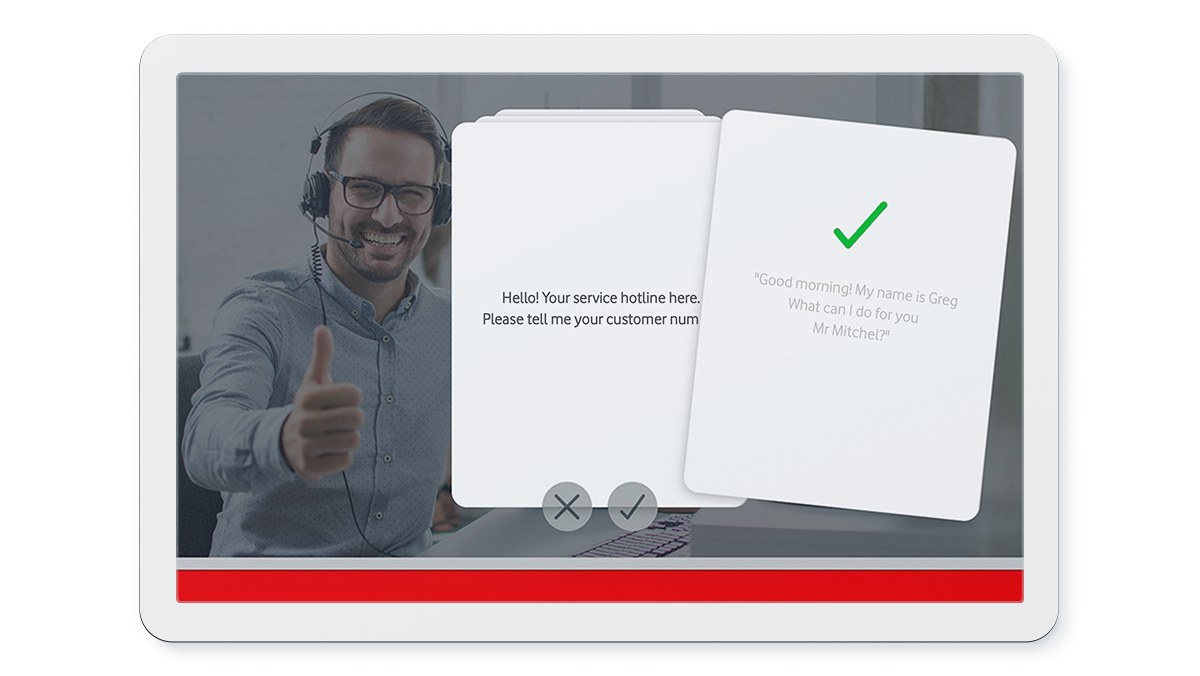
Performance cards
The hands-on workshop moderated by the trainers gives the employees an opportunity to apply what they learned and clarify any questions or uncertainties. This could include polls, multiple choice questions in the group chat or whiteboards.
The online quiz concludes the day. One great example is the BizQuiz. It provides participants with feedback on their learning progress and gives them the opportunity to close any knowledge gaps.
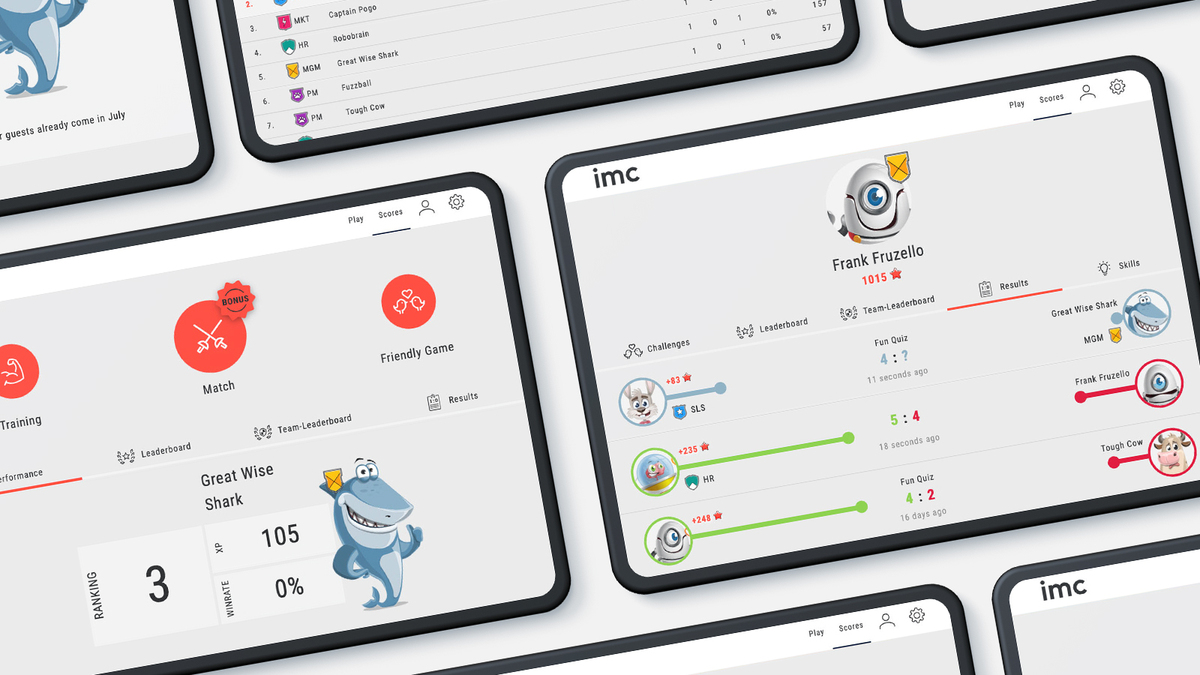
quiz app: Biz Quiz
Finally, the learner makes their personal entry in the learning diary. An easy way to integrate the diary is to design a page in the intranet, a document in the cloud or a form that mirrors the central starting point, and which each participant completes for themselves. This serves to summarise the core messages from the workshops or formulate the questions and tasks for the self-learning phase, as well as compiling key insights from the training courses. The personal learning diary thus becomes an individual reference resource participants can look things up in long after their onboarding.

Learning diary
GOOD TO KNOW
Time investment for trainers is automatically reduced
The targeted use of digital learning formats in the self-learning phase reduces time investment for trainers during digital onboarding. That saves costs and resources. Following this 6-module approach, trainers are only required for the kick-off and the workshop phase.
Digital vs hybrid onboarding
Digital onboarding works. This approach can absolutely be appropriate while also saving resources. Nevertheless, some onboarding processes are easier to realise in a hybrid format. Of course, that does require new employees to travel to the location.
One example for a good hybrid solution would be to communicate theoretical content through online self-study, and then bring participants on site to carry out specific actions, such as operating machinery. The face-to-face part of the training can then be utilised for practical exercises and to clarify questions.
Similarly, a dual approach helps with understanding the corporate culture. For instance, companies might invite new employees for an intro day before their first day of work. Make the most of this day by asking colleagues to talk about how they realise the values, objectives, and mission of the company in their daily work. This meeting can also be leveraged to establish an emotional connection with new recruits and build enthusiasm for the company.
In our experts’ experience, it is not as clear-cut as one approach being universally better. Rather, it is about selecting suitable formats and linking them in a helpful way based on the new employees’ needs and the learning objectives.
We linked a special treat for anyone interested in hybrid onboarding:

Digital Learning Journey
Reaching the destination with the right blend of formats: Digital learning journeys capitalise on the strengths of each learning format to create a motivating learning experience.

LMS Hot Topics: Science fiction or near future?
Onboarding can already be integrated into existing learning management systems. But Hanna's example shows that this is only the beginning.

Contact person
I joined the imc newsroom team in 2021. As a journalist my heart beats for content and storytelling.
I’m excited to figure out how e-learing and digitization affect the future of work. My task is to create content to talk about and I’m always looking for trends.
Privately I love to travel and eat Tapas.
Topics: E-Learning Trends, Corporate Social Responsibility, Press and Influencer Relations

Rapid Content Development: Creating E-Learning Trainings Quickly
Why fast creating digital trainings is possible but risky
... and suddenly, the training had to be scrapped. Many companies made that experience in lockdown number one. Employees needed to be trained, but the training was postponed due to Corona. Again. And again. However, most types of training simply cannot be endlessly postponed or even be cancelled altogether.
A pragmatic and swift solution is needed – training needs go where the employees are: their home office. For many companies, that means digitising learning content, and doing so quickly. They need rapid content development. This trend was already apparent before Corona, but the pandemic greatly increased the demand for the technologies that facilitate rapid content development.
This article explores what qualifies as rapid content development, what type of learning content is suitable for rapid digitisation, and what risks a strong focus on speed entails.
INFO
Definition: Rapid content development (RCD) is an agile model for teaching system design, comprising a preparation phase, an iterative design, template-based re-usable components and e-learning tools for quick and cost-efficient provision.
Speedy please – but without quality loss
We want things now: fast food, coffee to go, messenger services, online shopping … we no longer have time. Companies have also clocked onto this trend, and want to stay up to date with their training courses. An ever-increasing amount of knowledge is expected to be available almost instantly on various media while maintaining a high quality standard and staying within budget.
The solution: rapid content development. But wait a minute! No matter how fast you go, the quality of the overall learning solution must not be compromised. That’s why learning experts like Eva Lettenbauer always look at the big picture.

Eva Lettenbauer, Specialist Learning Experience Design at imc
Hi Eva, thanks for “quickly” making time for us. How did you experience the rapid content development hype last year?
Especially at the beginning of the pandemic, many companies were facing the challenge of having to digitalise their face-to-face training in a short space of time. However, directly transitioning classroom-based training courses to a virtual classroom or web session is not always effective, and it’s most certainly not efficient.
That is why we always examine the specific issues and objectives. This allows us to digitise specific learning content in a way that drives outcomes and boosts performance.
How do you handle requests for “rapid” content?
Since requirements differ as widely as the type of knowledge to be conveyed, digital solutions vary enormously. We start by analysing the sharable knowledge and the desired outcome. We also examine if the integration of certain existing learning solutions or curated content would add value, and examine the suitability of different learning infrastructures. Finding the right formats for the content at hand has to be a priority, as this then allows new content to be created quickly and systematically.
What risks does rapid content development involve, and how do you avoid them?
There is a risk of quality loss – creating too much content while neglecting quality, or losing sight of the target group, their performance or the intended business outcome when designing and creating content. This can make the learning solution irrelevant and ineffective. Often, less is more. It pays to take a closer look and be more deliberate when starting the rapid content development process, and avoid such mistakes.

When would you recommend slowing down?
Whenever learning corresponds to behavioural changes, aims to change the learners’ mindset, or the branding, look or feel of the learning solution are important, investing time to achieve a high-quality solution is paramount. This is the only way to gain the learners’ lasting interest and make them believe in digital learning approaches.
GOOD TO KNOW
Authoring tools enable companies to create learning content themselves or digitise existing material. This facilitates a flexible response to learning requirements within the company.
Authoring tools are cost-effective and allow both internal experts and other employees to create training courses. This is also known as user generated content.
What are the limits for content creation with authoring tools?
Authoring tools like imcExpress are ideal for quickly creating and sharing content based on facts or background knowledge. Digital learning content can be created quickly and – crucially – kept up to date. However, no learner should be trained exclusively with web-based training courses. Especially if their development involves the application of specific practical skills, traditional web-based training is seldom enough – but that is all an authoring tool can deliver.
What would a worst-case scenario look like? How “not to” do it?
Worst case: 5 days of face-to-face classroom training is taken “as is” and squeezed into a 3-day training course in a virtual classroom. Endless recordings of face-to-face training or web sessions replace the on-site presentation of the material.
Best case: A 3-day face-to-face training course is digitalised and broken up into various learning nuggets like short web-based training courses, complemented with learning tandems, snappy web sessions and curated content.
How about a quick summary? Happy to be at your service:
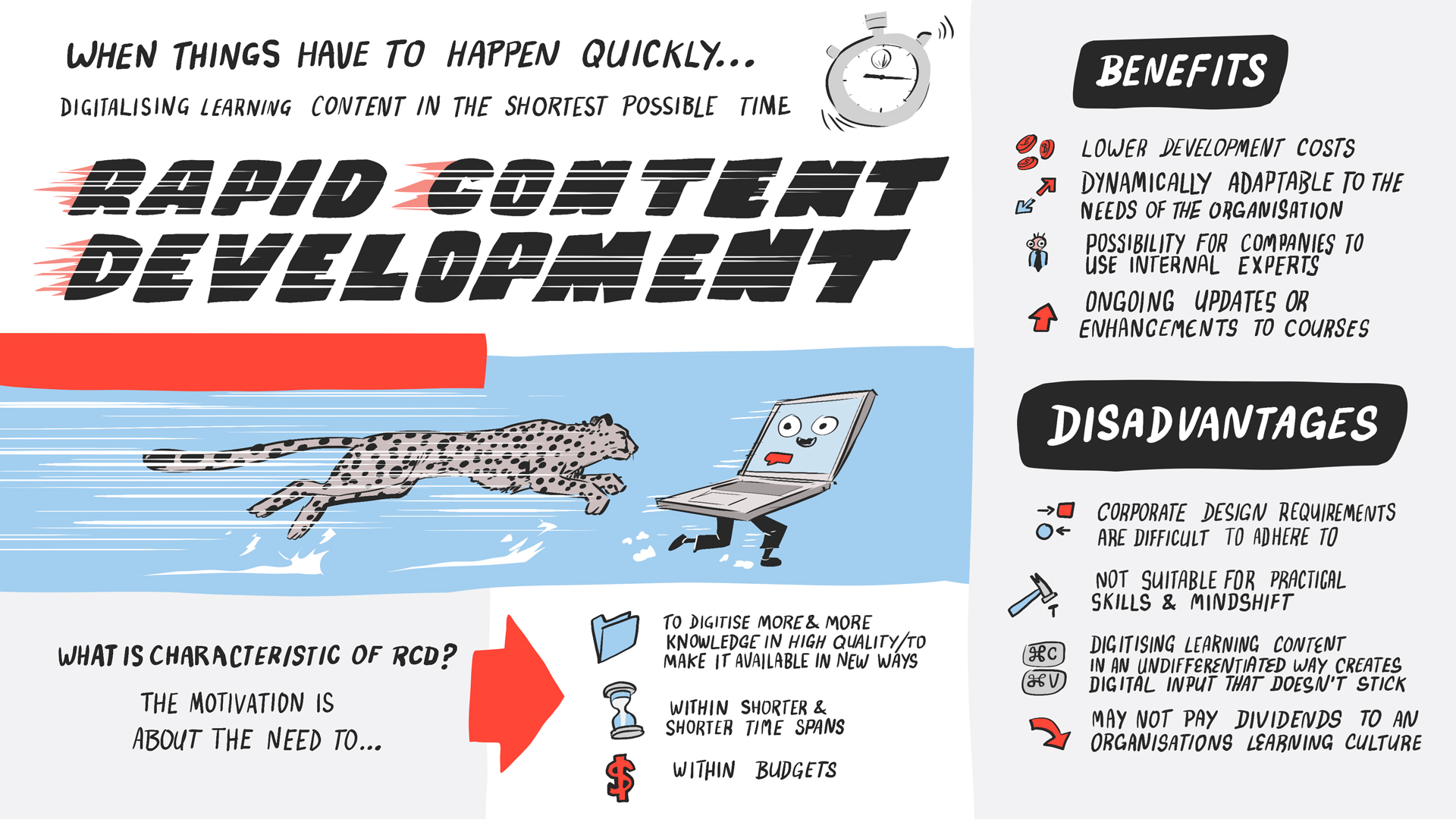

Digital Learning Journey
Reaching the destination with the right blend of formats: Digital learning journeys capitalise on the strengths of each learning format to create a motivating learning experience.

User-generated elearning content meets artificial intelligence
Creating learning content has nerver been that easy. Oliver Nussbaum and his team developed a new AI-driven authoring tool called imc Express.

Contact person
I joined the imc newsroom team in 2021. As a journalist my heart beats for content and storytelling.
I’m excited to figure out how e-learing and digitization affect the future of work. My task is to create content to talk about and I’m always looking for trends.
Privately I love to travel and eat Tapas.
Topics: E-Learning Trends, Corporate Social Responsibility, Press and Influencer Relations

Learning Management Systems for Membership Organisations - Key Features to Look For
Here we look at the unique requirements you should look for in a learning management system (LMS) for membership organisations, in order to make your platform effective for current and future training needs, while improving many other aspects of member administration.
Over the last few years, many professional bodies and trade associations have added online training, services and member benefits via an LMS to supplement their offline offerings.
However, as everyone is becoming more tech savvy and comfortable in doing more of their business and social networking online, many membership organisations now conduct the majority of their communication via an LMS or online portal, with some even being primarily or entirely run online.
Add to this the need for social distancing and remote communication while the coronavirus pandemic continues through 2021, and many membership organisations need an online hub to be able to function at all.
Often, generic LMS solutions can technically be adapted to meet the needs of a membership organisation with some custom development work. However, choosing one that has this use case catered for by design (rather than being very focused on training internal company employees) can save a lot of hacking around and headaches.
At imc, our Learning Suite has been developed with membership organisations as a key user-type, making it easy for administrators to organise training, certifications, CPD / CE, online communication and much more.

LMS key features for a membership organisation
These are some of the key features we have worked to continually improve, and that we recommend you look for when choosing the best LMS for a membership organisation like yours:
CPD / CE
Many professional membership organisations require a level of Continuing Professional Development (CPD) / Continuing Education (CE) for members to demonstrate their commitment to staying up to date with the latest industry information and best practices.
Therefore, a good membership LMS will help both users to follow and record any points-based training, whether conducted online or offline, while enabling administrators to signpost suitable courses and content.
Social Learning
While the typical LMS for employee learning and development will be set up to deliver on the top-down training requirements in line with a company’s business and compliance needs, many people join an organisation for the benefits of expert instructor and peer to peer support.
Therefore, a membership LMS should facilitate group chats, threaded discussions, and many of the content liking, sharing and commenting features that users will be familiar with from social media platforms like Facebook, Twitter and LinkedIn.
Multi-Tenancy
Membership bodies, especially larger organisations, may have multiple types of learners, each with their own needs in terms of features, as well as content. For example, there will be the members themselves - who may form one or more type - there may be the organisation’s own staff who need training and their own ongoing support and development, and there may be external partners, such as affiliates and 3rd party training companies.
A multi-tenancy LMS like imc Learning Suite allows you to use a single learning platform instance to create distinct learning environments for each of your audiences. Each group sees only their self-contained learning experience, which can be tailored to their needs in terms of content, hierarchies, active features, and even branding.
Learn more about multi-tenancy here.

Low-Cost Scalability
Many trade associations and membership organisations, including some of our clients, have tens or even hundreds of thousands of members. Therefore, you’ll want to make sure your LMS can scale with you to large numbers of members without costs spiralling out of control.
Unlike online training for company employees, many organisation members will need to stay enrolled but may be relatively passive - perhaps not active at all for many months or longer.
Therefore, the pricing model used within an LMS for membership organisations should be tailored to or flex to reflect that lower level of resource usage seen within a typical corporate LMS that will be priced based on users / active users.
Software Integrations
Of course, there are many moving parts within a membership organisation, with training being just one of them. Admin time is therefore a potentially big expense, so management of member data should be as seamless as possible across software platforms for CRM, email, video conferencing, finance, multimedia content and more using APIs.
For example, imc offers easy integration with popular 3rd party applications such as PayPal, Shopify, GoToMeeting, Microsoft Teams, Linkedin Learning and Salesforce.
It’s this streamlining of software products that enabled the RIBA (Royal Institute of British Architects), who have 47,000 members worldwide, to go from 5 different systems for attendance bookings, training content, email notifications and more to managing everything within their LMS.
Adaptive Learning
Keeping content relevant and fresh is key for learner engagement with your content. Adaptive learning capabilities within your LMS helps to intelligently assess learners’ existing competencies as they progress through training content. It will guide them to what they need to learn and improve on, and reduce the repetition and frustration that can come from ploughing through training where they are already capable.
eCommerce
LMS ecommerce functionality enables a membership organisation to deliver self-service enrolment, and purchase of individual or group courses, event attendance and more.
For larger organisations especially, this can greatly reduce admin overhead and bring significant cost savings. Look for integrations with popular ecommerce payment gateways, such as PayPal and Shopify.

Virtual Conferences
Prior to the Covid-19 pandemic, many events were already moving to a hybrid model in order to reduce the need for travel and open themselves up to a much wider audience.
Having virtual conferencing capabilities within your LMS allows you to quickly and easily set up and deliver tradeshows and member events at a fraction of the traditional cost and logistics. They can even be recorded and made accessible for any timezone, and open up discussion forums in moderated groups.
Content Creation Tools
Specialist learning and development teams will often create elearning content with popular software, such as Articulate, and make it available within the LMS. However, a membership organisation will often have tens or hundreds of subject matter experts who could be sharing their valuable expertise with the community.
An easy to use learning content development tool, like our own imc Express, can enable experts with no formal learning design experience to create and share training materials all within the LMS ecosystem. This can greatly reduce the time and expense of rolling out new training.
User Hierarchies
A large membership organisation will often have various levels of management, and local area leaders governing and supporting members within their group.
An LMS that is purpose built with membership organisations in mind will allow you to easily create hierarchies with differing levels of permissions, reflecting your own organisational structure.
Analytics & Reporting
Many membership organisations will have one or more overarching objectives supported by projects and events running across a year. A good LMS will enable you to easily create custom reports, giving you clear visibility of progress against overall and group targets.
Detailed analytics will enable you to laser in on groups or individuals that need additional support, as well as high-performers who could be earmarked as future leaders.
How we can help membership organisations like yours
If you’re involved in the running of a membership organisation and are looking to improve training delivery or reduce the time and expense of managing multiple software platforms, then the above checklist of features could help you leverage an LMS.
With the imc Learning Suite, we’ve helped a wide range of membership organisations, such as the ACCA (Association of Chartered Certified Accountants) and the Australian NRL (National Rugby League) to manage many areas of their member administration - not just training - all within the single ecosystem of their LMS.
If you’d like to discuss how an LMS could benefit your organisation too, contact us at imc for an informal chat about your requirements.
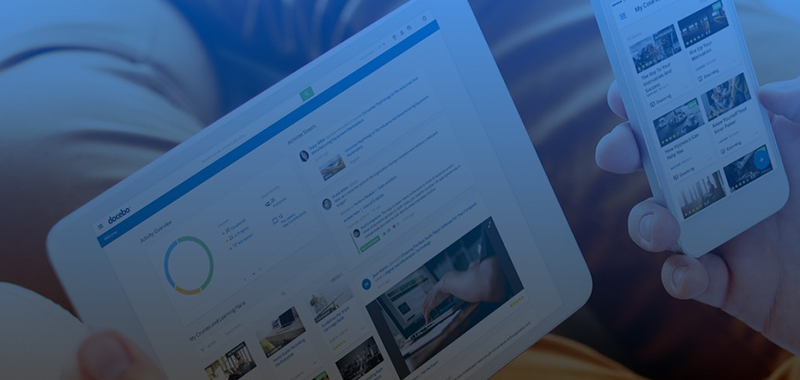
Multiple portals, one system
A multi-tenancy LMS is a single learning management system instance that serves various learner groups with differing training needs.

Training external audiences
The concept of training external audiences like members, is often referred to as Extended Enterprise Training. But what is an extended enterprise?
Contact person

Gamification takes corporate learning to a new level
Why game-based learning boosts motivation
Scientists estimate that if we watched children for a whole day, we would see them play at least seven hours a day. There’s a good reason for that: Children learn from games. Playing improves their motor and cognitive skills and can boost their confidence and self-awareness.
This positive impact is not limited to children. Playing even enables adults to fully exploit their potentials. The brain is revved up to the max during a game.
Many large companies utilise this very fact in the professional development and qualification of their employees. We took a closer look at the most popular types of games, and summarised practical examples for potential applications.

Games motivate us to take the initiative to learn
Motivation is a tricky thing. Thinking back on our school days torturing ourselves memorising vocabulary, few of us will say: “Boy, was I motivated to learn vocabulary!” However, thinking back on a game we thoroughly enjoyed, we will likely remember how motivated we were. Whether that was a board game, video game, smartphone game or a sport, our motivation came from within.

This is called intrinsic motivation. Intrinsic motivation is based on various inner needs, such as the desire for social exchange or a perfectionist ambition to overcome challenges. While playing, we often drift into a flow state, a state of effortless but intensive concentration.
If we are highly motivated and extremely concentrated when learning, not much can go wrong. Indeed, game-based learning has far higher completion rates than other types of training courses.
The most popular types of game-based learning

Drill and practice games:
Suitable for traditional knowledge accumulation, learning facts or cognitive skills. They work best if coupled with right/wrong feedback. One example is the imcBizQuiz App. The training process is similar to a TV quiz show, and employees or teams can compete against each other.

Learning adventures:
A great tool for changing perspectives, helping to convey emotional content and sensitise participants for specific topics.
Learning adventures are based on the genre of point-&-click adventures. They focus on explorative learning and discovery, integrating storytelling – content is linked with an exciting story. imc applied this principle in the adventure game City of Goods created for Linde Materials Handling. During a virtual visit to the warehouse, participants need to discover, document and collect potential optimisations.

Simulation games:
A strong contender for learning practical skills. Knowledge is primarily transferred through interdependencies and the cause-effect principle. Simulations present a simplified picture of reality, which can be changed through the parameters or algorithms in the game code. This type of learning is particularly helpful for movement flows, dangerous actions or machine handling with high cost risks. Flight simulators used in pilot training [LINK to Lufthansa case study] are a well-known example.
A snapshot of the advantages of game-based learning
Learning games lead to changes in our motivation, behaviour or opinion of learning. They can boost cognitive and motor skills.

Moreover, we release dopamine when playing. Being rewarded is a crucial trigger for this hormone release, and rewards like scoring points, moving up the rankings or obtaining digital badges are easy to integrate.
Still, the key factor and most important reason to utilise learning games is and remains the positive impact on motivation. This lowers the drop-out rate for training courses, resulting in greater long-term learning success.
So: Game on! Let’s take e-learning to a new level.

Go for Game-based Learning
We talk about what lies beneath the trend of this playful knowledge transfer method. We explain why it works so well and present 3 application scenarios for learning games in the company.

Training soft skills with serious games
Softskills are more important than ever. But how to train them? imc's research team dealt with this challenge in the DEVELOP research project.

Contact person
I joined the imc newsroom team in 2021. As a journalist my heart beats for content and storytelling.
I’m excited to figure out how e-learing and digitization affect the future of work. My task is to create content to talk about and I’m always looking for trends.
Privately I love to travel and eat Tapas.
Topics: E-Learning Trends, Corporate Social Responsibility, Press and Influencer Relations


